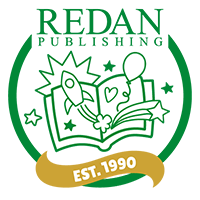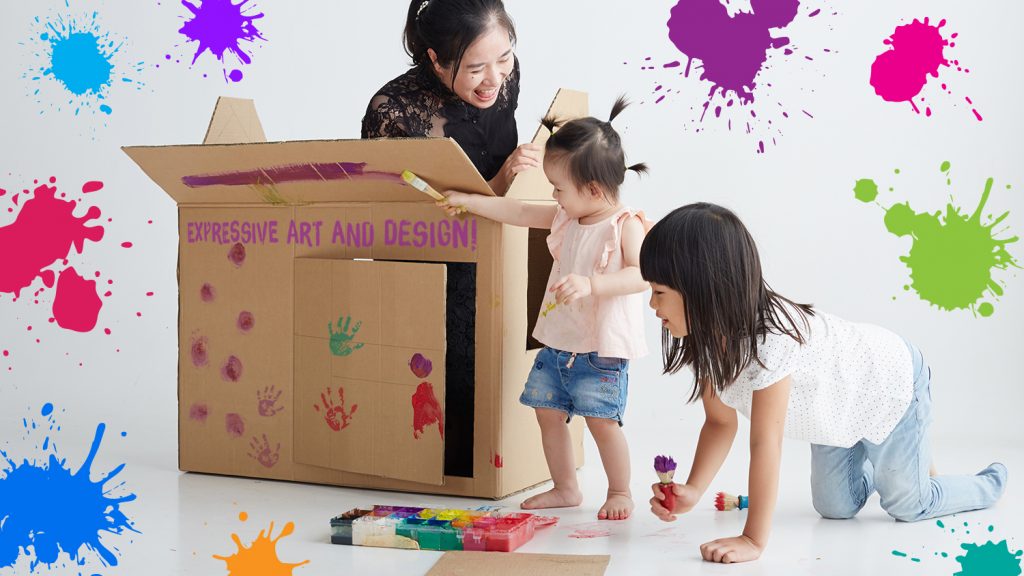
The Beautiful Early Years!
Key Area No.1: Expressive Arts and Design.
I was once stuck outside Ikea when my husband realised that the furniture we’d purchased, plus our children weren’t going to fit in the car. Stranded at Ikea, my girls found a huge cardboard box to play in and when my husband finally returned half an hour later, they didn’t want to leave…
You will frequently see junk and huge cardboard boxes in Early Years settings. The Expressive Arts and Design element of the Early Years Foundation Stage curriculum is not as formal as the title might suggest. So much of this is considering carefully what children see, hear and the experiences they take part in which help them to develop their imagination and creativity. It is also about following their natural curiosity and creativity whilst helping them to develop specific skills.
This is a broad and beautiful part of the curriculum which includes a wide range of experiences from moving and responding to music to junk modelling, drawing, painting and role play. In Early Years environments, practitioners are experts in capturing and nurturing creativity but how can we support our small people at home? Here are just a few ideas to get your creativity flowing…
Music Appreciation – Dance Like No One is Watching
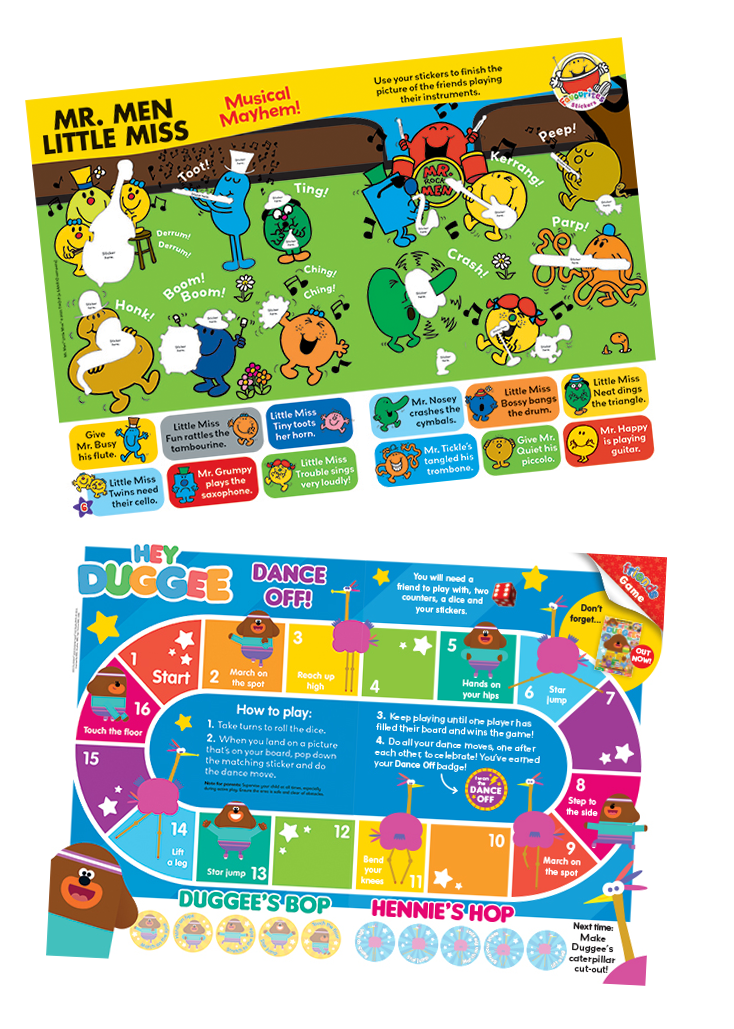 Singing nursery rhymes and well-known songs is in our DNA. It is a lovely way to connect with our children whilst also beginning to help them follow a melody and use our voices and actions for effect, ‘You’re Happy and You Know It,’ ‘Row, Row, Row Your Boat’. As children march and move to these songs they are beginning to get a sense of a beat (which is much easier than clapping in time!)
Singing nursery rhymes and well-known songs is in our DNA. It is a lovely way to connect with our children whilst also beginning to help them follow a melody and use our voices and actions for effect, ‘You’re Happy and You Know It,’ ‘Row, Row, Row Your Boat’. As children march and move to these songs they are beginning to get a sense of a beat (which is much easier than clapping in time!)
It’s amazing if you can expose your children to different types of music from around the world and ‘live’ music is even better. I used to regularly bob around (while my children danced) for 20 minutes or more watching the buskers in town, live and free!
The ‘Musical Mayhem’ activity previously featured in Fun To Learn Favourites is a brilliant prompt to encourage some ‘music listening’ where your small people can learn about different instruments with Mr Men and Little Miss.
The listening will most probably lead to dancing and the Hey Duggee ‘Dance Off’ game would be great to accompany the fun!
Role Play – Being Someone Else
In Early Years settings you will find ‘small world’ play. Numerous toy people/characters that the children can play with, totally engrossed in elaborate imaginary stories. When children role-play, they are ‘playing out’ their lived experiences and also experiences which are completely different. They are growing their empathy and developing their problem-solving skills. Dressing up is always a winner too. Random items such as hats, gloves and wands can support the children to take on a wide range of characters.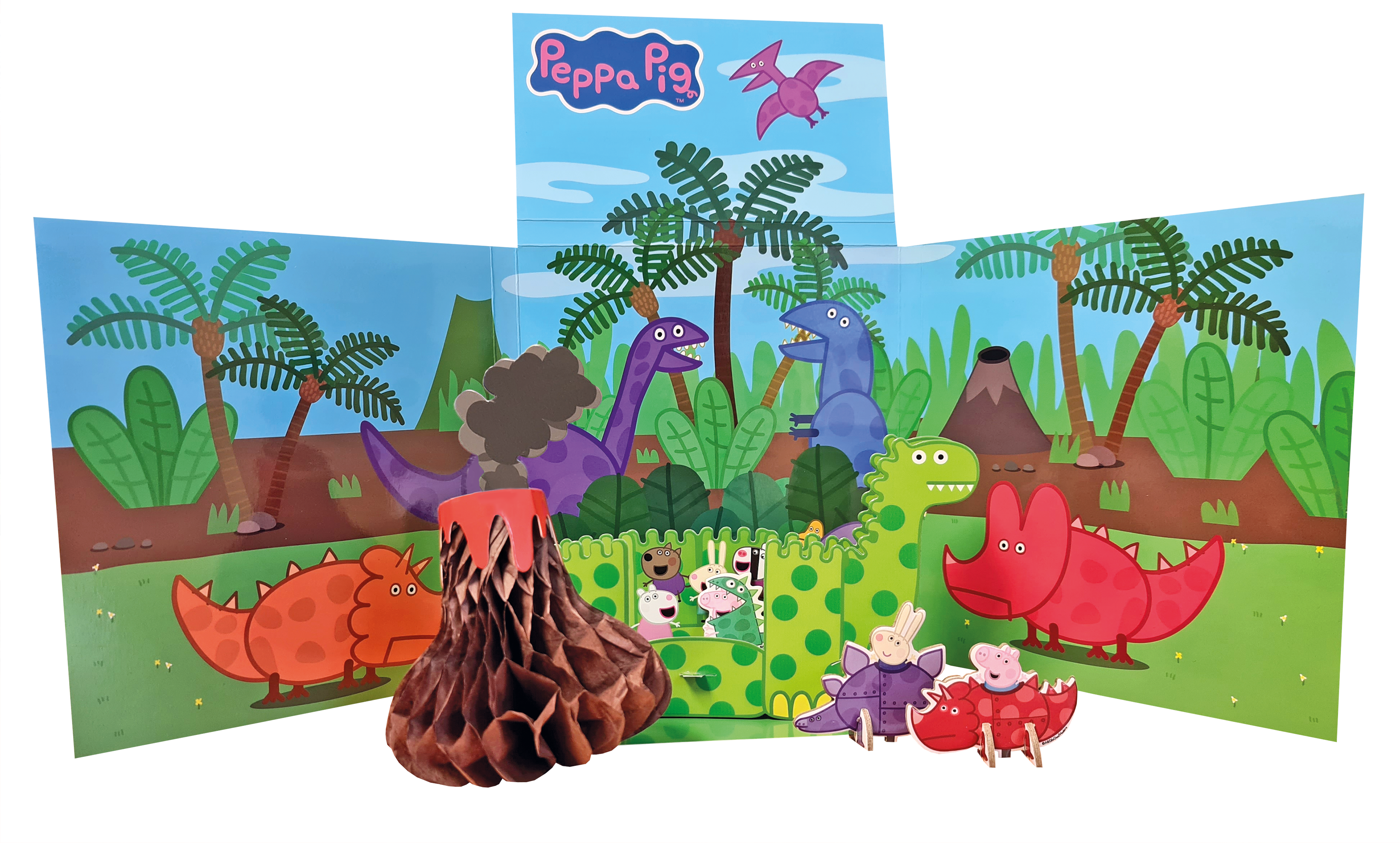
Children often enjoy this play most with their peers, but adults can role play too! Pick a character and create a story. Including a problem is a great way to get the game going, ‘Oh no, the bear keeps stealing our food!’ The gift on this month’s Fun To Learn Favourites has a dino role-play scene you can create – maybe Susie Sheep is frightened of the volcano but Peppa Pig and Rebecca Rabbit just want to explore!
Art and Design – Painter to Architect
Recycling is becoming an established habit in our lives so junk modelling at home is easy to resource and fabulous fun. The idea is that children create their own models using random junk based on their ideas. If they are struggling to get started, making a home for a toy is always a good way in. Younger children need more support with holding scissors and cutting and my top tip is always turn boxes inside out as they can then be painted/drawn on easily.
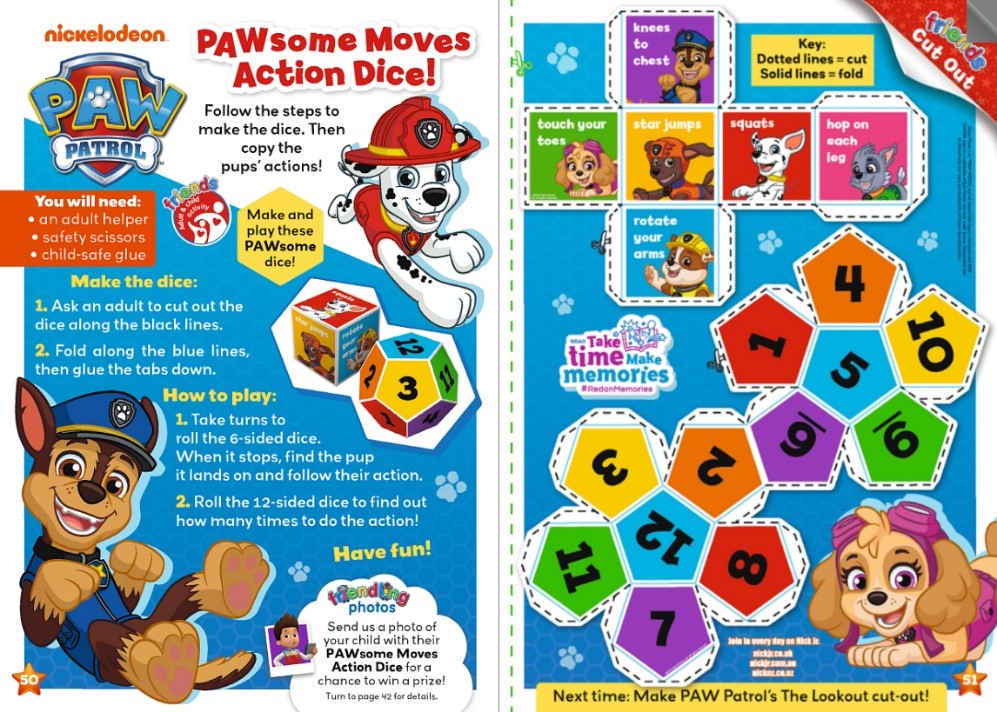 In Fun To Learn Friends this month there is a fun PAW Patrol cut-out game which is great fun for an adult led activity…
In Fun To Learn Friends this month there is a fun PAW Patrol cut-out game which is great fun for an adult led activity…
Art at home needn’t be over the top. Put out big paper (old Wallpaper from charity shops works well) and let them explore. Children begin with scribbles, these become more controlled, then lines and patterns and then more meaningful ‘pictures’ of people or objects or writing. Let them explore different materials e.g. pencils, crayons, pens, chalks etc.
Painting is always great fun when you have the energy. Try to give the children only the primary colours Red, Yellow, Blue plus black and white and a palette to mix in. This will help your child to investigate colour mixing and they’ll begin to develop this valuable knowledge.
Not only does art help them to grow confidence and creativity it also helps them to develop fine motor skills (fine muscle control), gross motor skills (large muscle control) and hand eye co-ordination.
Finally as always follow your child’s interest, let them lead and enjoy their creativity because as Maya Angelou famously pointed out, ‘You can’t use up creativity. The more you use the more you have.’
Rachel x
This Blog series looks at the 7 key areas of learning in the Early Years Foundation Stage and links activities featured in our Fun To Learn magazine range that will help support this development.
Images: © Shutterstock | © Redan
Sample Page Images: Mr. Men™ Little Miss™ © 2021 THOIP (a SANRIO company). | HEY DUGGEE™ and character logos™ & © Studio AKA Ltd 2014.Licensed by BBC Worldwide Ltd. BBC logo TM & © BBC 1996.
© ABD/eOne/Hasbro | © 2022 Spin Master <\span>
